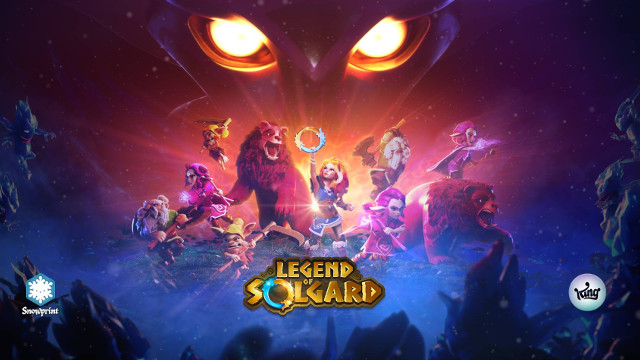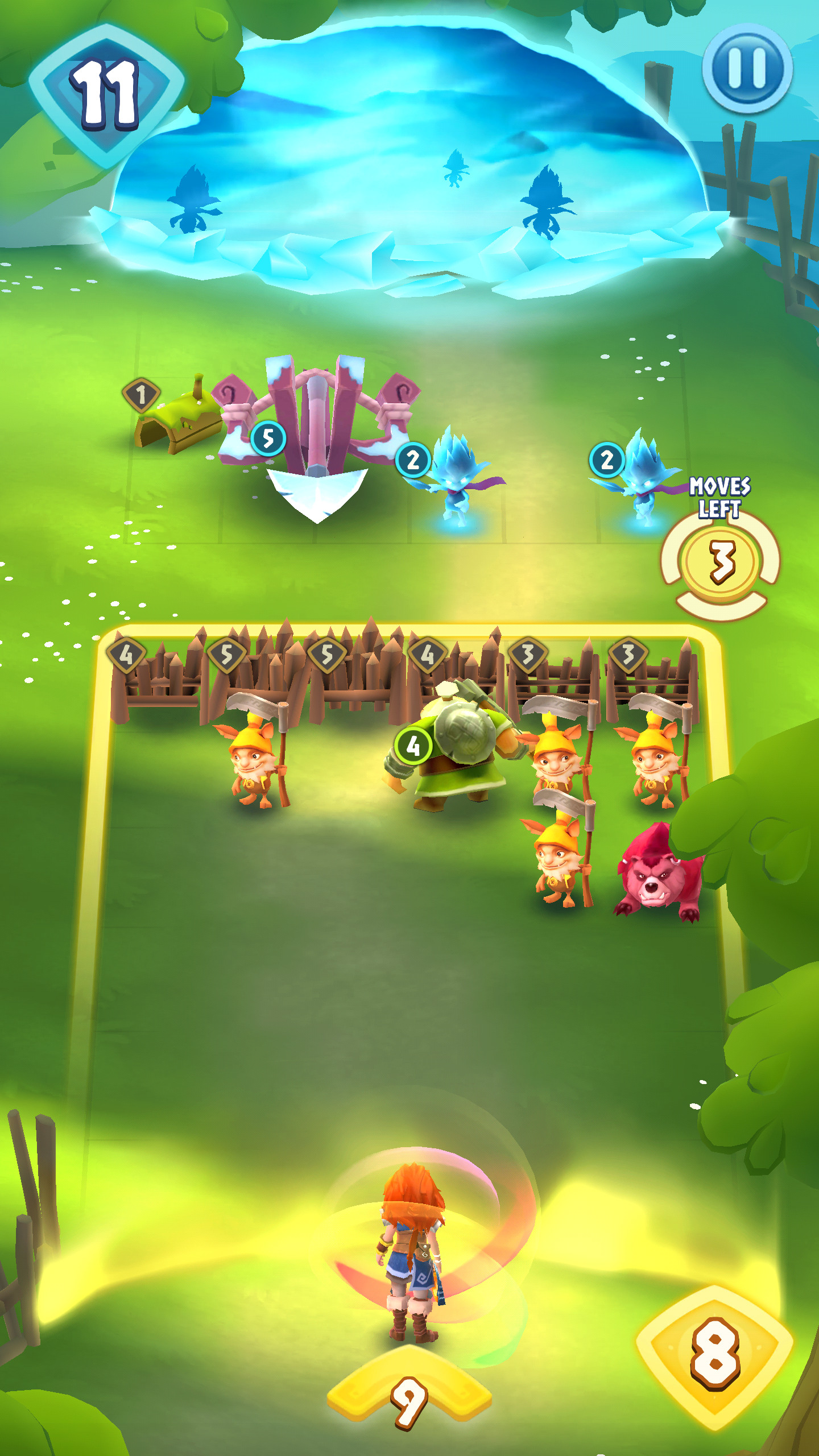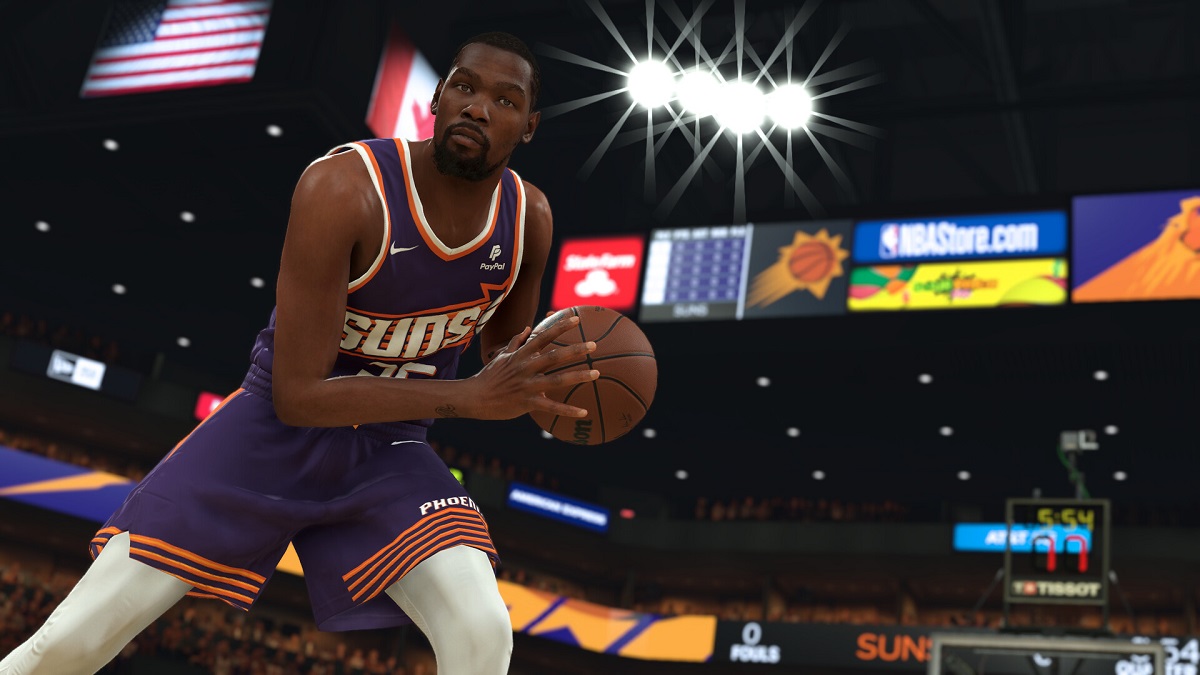The latest offering from Candy Crush publisher King strays a bit from their normal fare. A turn-based Battle RPG, Legend of Solgard takes the match-three mechanics the company’s games are known for and integrates it into the game’s combat mechanics. No longer is the goal to clear the board while earning as many points as possible. Instead, players are asked to make matches strategically, in order to create the best attack and defense scenarios.
Legend of Solgard’s premise is fairly simple. It’s Ragnarok — the Norse end of the world — and you’ve been summoned by the messenger of the gods, Ratatoskr, to help stop it. To do this, you’ll command an ever-growing army of creatures in battles to either destroy portals before the attacking armies can make their way through or to eliminate increasingly difficult bosses. Effectively, these constitute the two primary types of battles in the game, with portal destruction being the most common of the two. (Boss battles make up about one-fifth of the game.)
How it’s different from other King games
As stated above, Legend of Solgard makes use of the match-three mechanic most of King’s games are known for. As with other games that use this mechanic, this one starts out fairly easy, and in some cases is actually less difficult than traditional match-three games.
You don’t need to match items from spaces right next to each other. Instead, you tap any creature at the bottom of a column and then tap another column to move it and complete a match and bring a unit into play. You also must manually add more creatures to the field, rather than them falling when you make matches.
One thing that hasn’t changed from other King games is the energy mechanic. Starting out, players will have 40 energy on hand. Early battles will only require one energy to start, but the requirements will increase as a player progresses. As with most mobile games, this means that eventually, you’ll wind up with two choices: wait for your energy to recharge or spend some money.
It’s a bit like a card game
If you’ve played any digital CCG’s, then some of Legend of Solgard’s mechanics may feel very familiar to you. No, you’re not actually collecting cards. You’re collecting creatures of varying types. Currently, there are 30 creatures available to unlock in the game. Even without having unlocked these creatures, it’s still possible to see their stats by looking under the Collection button at the bottom of the screen. Idols – which apply different effects to creatures – can be found here as well.
In early levels, you will only have a few creatures to summon. Ratatoskr gifts two creatures to start with and subsequent creatures are earned over time. However, it should be noted that when a new creature is acquired, you won’t have access to it immediately. Instead, you’ll need to unlock it using Sun Gems, which are earned from either winning battles or completing raids. The latter is the paid option as you’ll need to purchase raid tickets to do them.
Each creature has its own Sun Gems and requirements to obtain them. Information on how to unlock a specific creature’s Sun Gems is available in their stat sheet. There you’ll find a picture of a gem with a magnifying glass over it. Clicking on this will tell you what actions you need to complete in order to earn the gems.
The creatures
Creatures are categorized in a few ways. The first is by color. When you begin a battle, you will notice that the creature selection screen has four slots – with each being a different color: red, yellow, green, and purple. All creatures are one of these colors, and you can only have one of each color active at a time.
The next way to categorize them is by race, which consists of beasts, small folk, warriors, spirits, critters, attackers, and wyrms. While this isn’t important immediately, it will become so as you play as you must use race weaknesses and strengths to your advantage in battle.
In addition to race, each creature also has a specific role – indicated at the top of their stat sheet. These include attackers, defenders, and supporters. Technically, all three roles will attack, but this information will come in handy when putting together a group – especially because it will affect their special abilities which can have a huge impact on later battles.
For instance: One of the first creatures obtained is the Roughpaw, a bear that fills the supporter role. Its special ability is to provide additional stats to nearby creatures. Keeping this in mind when building a group – or troubleshooting that one battle that you just can’t seem to get past – will be key in being able to progress through the 40 levels and side content currently available.
Another thing to note is that some creatures will have a “hold” before attacking, meaning that after being combined they will have to wait a turn before attacking. However, this doesn’t impact any passive traits they may have, such as adding stats to other creatures.
Leveling up
As with any game with RPG elements, there is leveling involved — for both the player character and the creatures. For the most part, the player character’s leveling process requires nothing on the part of the player. When the character levels up, they’ll automatically get an increase in HP and other stats. And on some occasions, they’ll get a new ability.
Creature leveling is a different matter. Yes, the creatures do earn level ranks, but there is more to it. As you progress, you’ll continue to earn Sun Gems. (Yes, the same kind needed to unlock a creature in the first place.) When enough Sun Gems are acquired, you’ll be able to apply them to creature’s stat sheet.
If a creature has a high enough level, they will have symbols on the front of their pedestals when viewed in the stat sheet. You can choose to apply Sun Gems to any of these and upgrade individual qualities like strength, defense, crit chance, and so on. As you progress, it will be important to be aware of what qualities you’re upgrading on each creature — particularly since you’ll be using combinations of creatures in battle and you want to make the best use of them as a team.
The good thing here is that while creatures are going to have crossovers in what qualities you can upgrade, each one is slightly different. But, for example, you don’t want to just level strength on every single creature that has it without taking into account how their other qualities might be of more use.
 Idols
Idols
In addition to using qualities, you can also use Idols to improve your creatures. Idols are special items that are acquired through crafting. As you play, you’ll obtain various items needed for crafting.
Once crafted, Idols are applied to creatures by placing them on the podiums behind the creature in their stat sheets.
Not all creatures can use the same Idols. To determine what Idol your creature can use you’ll need to look at the symbols on the podiums behind them. These correspond with symbols on the top of the Idols. Tapping on an Idol will also inform you of any other criteria a creature must meet — such as having hit a certain level or having a specific role.
 Combat basics
Combat basics
For the most part, the basics of combat will be covered in the game’s tutorial – which is fairly thorough. Legend of Solgard plays in combat turns – player against AI. During their turn, players can execute three moves. These moves can be used to combine creatures in order to create larger, more powerful creatures (or defense structures), to remove creatures preventing combinations, or to add more creatures to the bottom of the field.
As with other match-three games, different combinations of creatures will have different results. Combining three of the same creature in a column will create a slightly larger, slightly more powerful creature, combining four in a square will create an even bigger creature, and combining three or more in a row will create defense barriers the enemy must break through in order to be able to attack you or your army. These are just a few examples. As players progress, more combinations with differing results are made available.
Each battle starts with a number of creatures already on the board — meaning that for at least the first turn, you effectively get a free move. Otherwise, your first move would be summoning creatures. Instead, you can make good use of that first turn by making solid matches and getting in an early attack.
Early in the game, the goal will simply be to take down the portal or boss as quickly as possible. During these rounds, the enemy creatures can often be ignored in favor of directly attacking the primary targets. Of course, there will be a bit of luck required for this strategy, because it depends upon you lining up your creatures in lanes that are not blocked by enemy creatures or obstacles. Like you, the opponent will be able to place structures on the field in order to slow things down.
Reading the combat field
When playing a match, you’ll want to read the field. Luckily, it’s all pretty simple. You and your creatures take up the bottom of the field. As you combine creatures you’ll see numbers appear next to them. This is the amount of health they have at the time. HP will increase as you continue to combine certain creatures.
Similarly, the enemy side of the field will display HP for creatures and obstacles. Both sides also display HP for the main character and the portal or boss you’re trying to defeat. These are found in the bottom right-hand corner and upper left-hand corner respectively.
In the middle of the field, you’ll see an indicator letting you know how many moves are left in your turn. At the bottom, directly under your character, you’ll see an arrow with a number. This indicates how many creatures you have in reserve — the ones that have returned to you after being defeated on the battlefield or after you’ve removed them.
Something important to note here is the shadows behind the portal barrier. These are creatures and equipment making their way to the field. The closer they are to hitting the field, the more the shadow will stand out.
Tips for a better game
As noted, early on in the game, all you really need to worry about is taking down the portals or the bosses as quickly as possible. However, as you progress, you’ll need to pay close attention to creature placement and how you use your turn effectively. Now that you understand the basics of the game, we’ll offer some tips that will help you get along in combat with more ease.
- Be aware of creature placement.
- Some creatures are labeled support for a reason, but in order for them to work effectively, they need to be near the creatures you’re wanting them to affect. For instance, you can’t have a creature that boosts HP on one side of the board and the creature attacking on the other.
- It’s also important to be aware of placement in relation to what’s going on on the enemy board. Looking to take down the portal without much of a fight? Try to place your creatures in a clear lane. Worried one of the enemy creatures are too powerful to let go? Line everything up on it first.
- Be sure to read the combat board as well and be aware of things like how much HP creatures and obstacles have. Since you can combine creatures to make even stronger ones, this gives you a chance to overpower your opponents.
- Stack the odds in your favor from the start.
- Once you have enough creatures, you will be able to choose just how you want your team built. Check those stats and make sure they compliment each other. Doing this will make things easier for you once in the combat phase.
- Don’t be afraid to pull creatures that are in the way.
- A good thing about this game is that when one of your creatures leaves the board — either because it’s been killed or because you elected to remove it, it returns to you. You never have to worry about running out.
- Check stats and level often
- It’s so easy with games like these to just keep playing and forget all about the maintenance-y stuff. But this game does function like an RPG and that means that if you don’t stay on top of improving your creatures, you’ll eventually hit a wall which will make the game annoying or no fun at all.
- Take advantage of the side stuff
- As any good RPG player will tell you, eventually just doing the regular quests won’t be enough. Sooner or later, you’re going to need to do some additional stuff to put yourself over the top. Luckily, if you look on your map, you’ll see bounties, treasure caves, and dungeons. These won’t be available right away, but when they are, make use of them. In a lot of cases, that’s how you’ll acquire things you need to progress.
- You’ll also be able to take advantage of daily quests. These can be found by clicking the treasure chest in the upper right-hand corner of the screen, along with daily login bonuses. Both will unlock after reaching a specific level — 3 for the quests, 4 for the login bonus.
- Watch those portal shadows.
- You can tell from the silhouette what they are and being aware of their position in the portal will help you prepare for them before they arrive.
And there you have it, everything you need to know to get started in Legend of Solgard. Make good use of this and you should get plenty of enjoyment out of the game — instead of hitting the wall of frustration we run into in so many games.












Published: Aug 29, 2018 02:47 pm